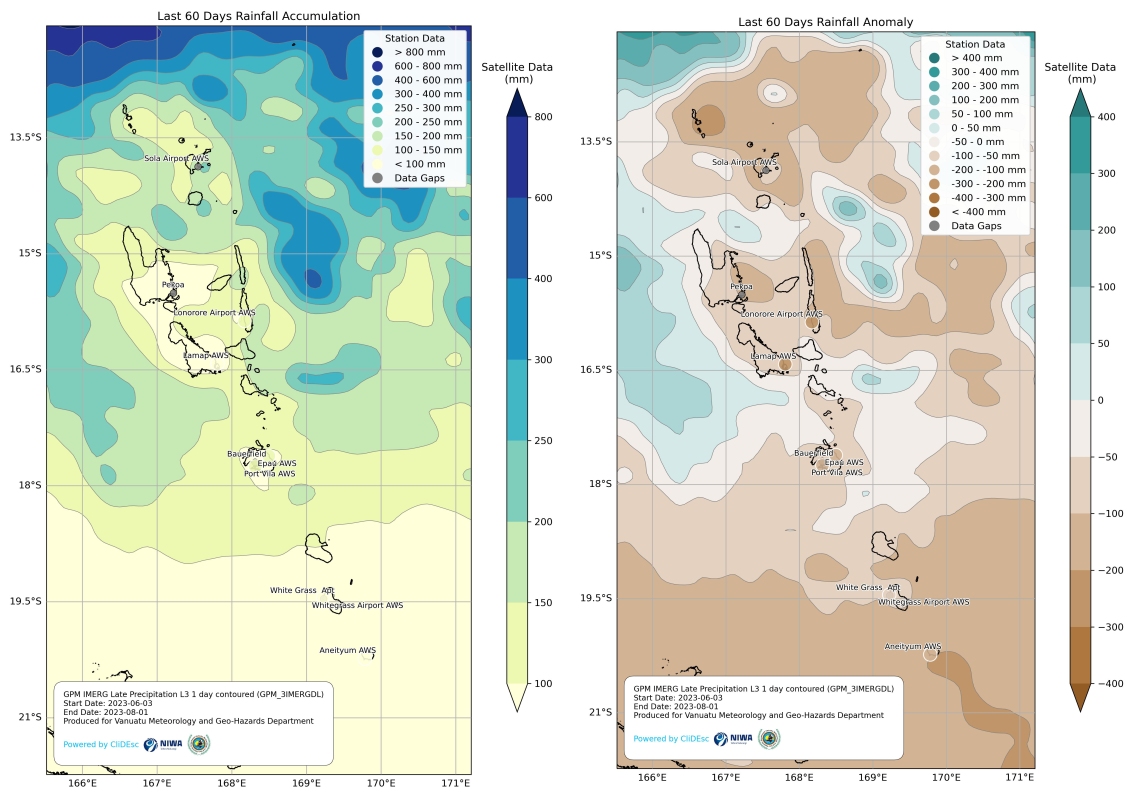CliDEsc is a web-based content management system and product generator library developed by NIWA in consultation with National Meteorological and Hydrological Services in the Pacific region, and with the Australian Bureau of Meteorology.
The acronym CliDEsc (Climate Data for the Environment Services Client) derives from the early link to the Bureau’s CliDE (Climate Data for the Environment) database system . Since then, product code has been added to connect to other structured database management systems.
The CliDEsc interface enables users to run installed product generators that source raw data and produce time series, maps and tables. Advanced users can develop product generators (typically using R, Python, and PHP), and register them in the CliDEsc product library. Information to assist Pacific CliDEsc developers can be accessed in Gitlab by request, including tips for writing R and Python code and examples (please contact NIWA for access).
CliDEsc uses decoupled system architecture so is independent of database design; product generators extract data from remote sources and process data locally. CliDEsc has its own authentication and user administration.
The content management system underlying CliDEsc was built by Catalyst IT in New Zealand using the Silverstripe content framework.
The green-shaded cells in the diagram below show the core functions of the CliDEsc content management system and product generator library. CliDEsc products read external data sources (left) and create outputs for both internal and external users (right):
The diagrams below show two example CliDEsc products customised for users: Rainfall anomaly time series for Apia, Samoa (left); modelled rainfall estimates for Fiji (right):
The image below shows rainfall accumulation (left) and anomaly (right) maps for Vanuatu, derived from both satellite and surface observations, examples from a range of maps produced automatically every day:
The CliDEsc User Interface – example for New Zealand:


